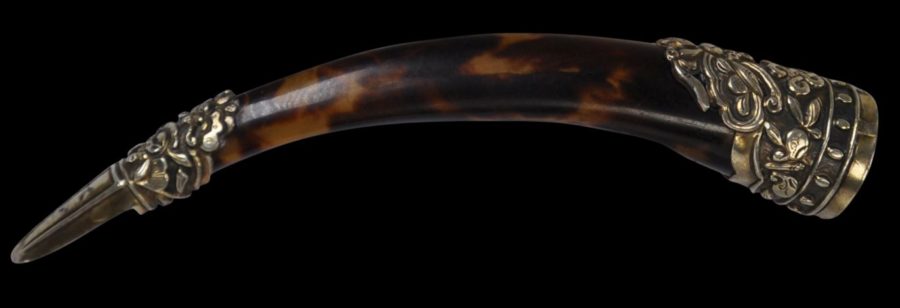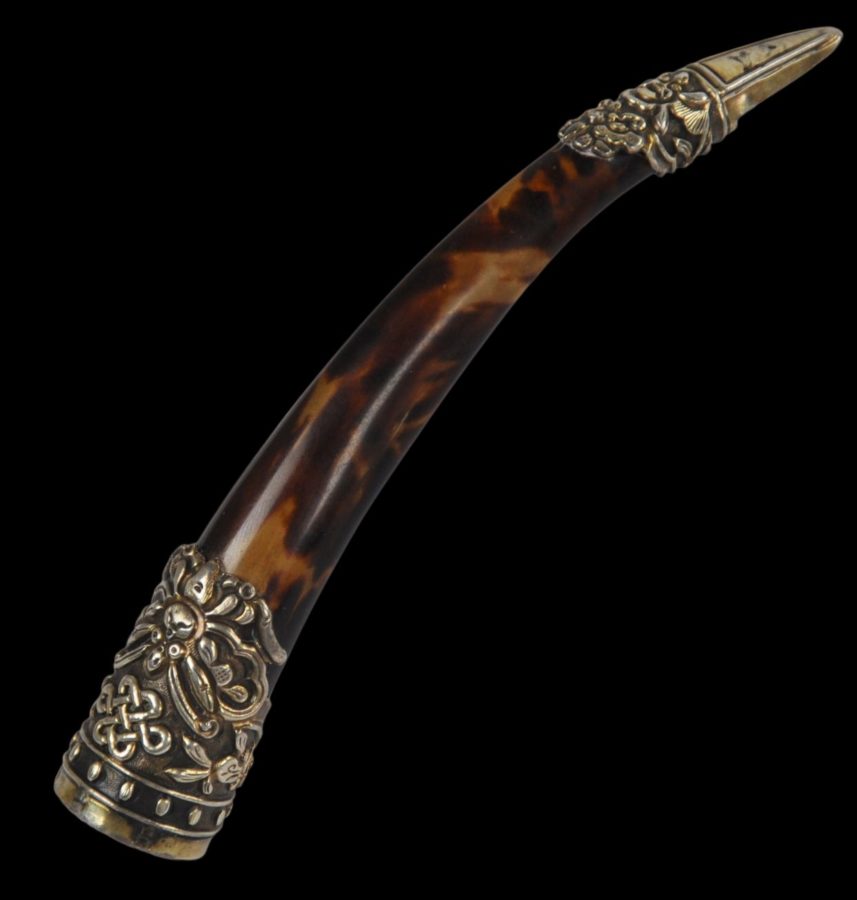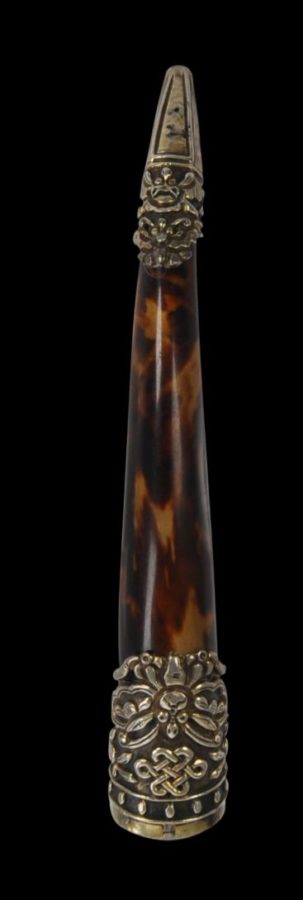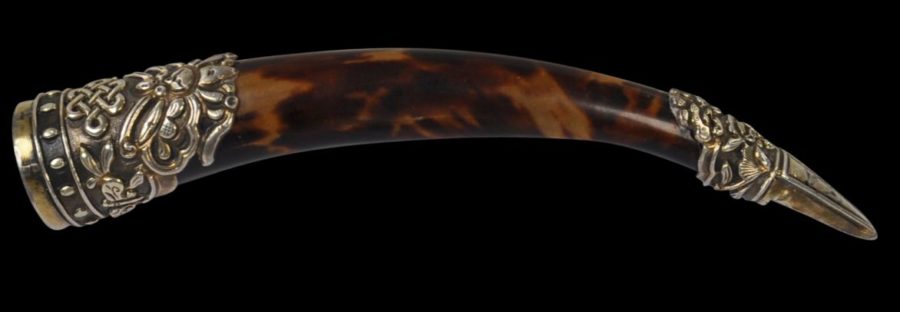This splendid, long fingernail guard is made of a single piece of tortoiseshell that has been softened and formed into the required shape.
The underside is pierced finely with six ‘cash’ symbols.
The upper end and the tip are encased in gilded, chased silver that has been decorated with auspicious symbols including butterflies and an endless knot motif.
Fingernail guards or protectors were worn by a very elite group – Manchu court ladies of the late Qing dynasty. Long nails became synonymous with a life of luxury and having servants. As such long fingernails were valuable status symbols and so were protected with guards such as the two shown here. Typically not all the nails were protected but rather one, two or three on each hand. The Dowager Empress Cixi (1835-1908) was a very conspicuous wearer of such guards. She loved sitting for elaborately staged photographs and many of these show her wearing long fingernail guards but only ever two or three on each of her hands.
Traditionally, the Chinese had a strong belief that their bodies should remain whole for presentation in the afterlife. Duda (2002, p. 152) claims that members of the nobility would save their fingernails clippings throughout their lives so that they could be interred with them, along with any other body parts that might have been shed during their lifetimes, and given this attitude to their fingernails, that it should not be surprising that they might have wanted to protect them with fingernail guards.
Fingernail guards made from tortoiseshell are illustrated in Chen et al (1986, p. 277).
The example here is in excellent condition.
Below: The Dowager Empress Cixi, wearing prominent finger nail guards, late 19th century.

References
Chen, H.S. et al, Catalogue of the Exhibition of Ch’ing Dynasty Costume Accessories, National Palace Museum, 1986.
Duda, M., Four Centuries of Silver: Personal Adornment in the Qing Dynasty and After, Times Editions, 2002.







